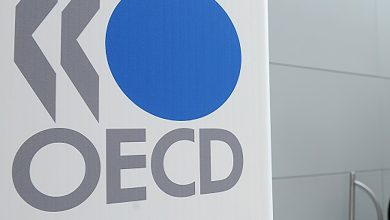Silent power plays: Addressing challenges and invisible hands behind central banks that aim for autonomy

Globally, central banks endeavour to achieve price and financial stability. Many central banks, including the US Federal Reserve system, claim independence from external pressures, which means they can make monetary policy choices free of political interference. This also includes separating monetary policy from fiscal policy in order to prevent political leaders from manipulating inflation to reduce the real worth of public debt.
Without such independence, a government with a lot of debt may be inclined to influence the central bank to create inflationary conditions. This inflation reduces the real value of money, making future debt repayments more affordable, but at the expense of economic stability and public trust in the currency. On the other hand, some central banks have determined that independence is inefficient for their economic structure.
So, are these statements true? Is a central bank truly immune from such violations?
To successfully address these problems, numerous essential components of independence must be examined, including political independence, operational independence, and financial market independence.
Many say that central banks operate independently of political considerations, making choices based only on economic data and unbiased research. However, the reality of central bank governor appointments frequently refutes this premise. Typically, the government has the power to appoint the governor of the central bank. This implies that the government could select a governor who aligns with its own political or economic goals, thereby undermining the central bank’s declared independence.
The influence is especially strong when the governor’s term is short, causing the governor to pursue policies that will win favour with the government in order to be reappointed. This process can quietly force the central bank into supporting government policies that disagree with what is economically prudent, undermining the institution’s actual independence.
For example, when a president openly instructs the central bank to reduce interest rates in order to stimulate economic growth, even if this contradicts the central bank’s purpose, it demonstrates an obvious lack of independence.
However, the story does not end there; we still need to investigate the second highlight, which is operational independence. This means that the central bank should be able to deploy any instrument it wants and control its own balance sheet independently of external factors.
To support their claim of independence, we must look at the key accounts on their balance sheet, which include “assets,” the largest of which are securities, and “liabilities,” the majority of which are reserves.
To begin, they hold securities, typically government bonds, often known as risk-free, in order to conduct open market operations, which are critical activities. This entails buying and selling financial instruments to either infuse or subtract funds to influence the economy.
The government issues these debt instruments, meaning that it has influence over one of the central bank’s most vital tools. This suggests a potential conflict between the central bank’s goals of price stability, financial stability, monetary policy, and independence and the government’s goals of supporting economic growth and fiscal stability through government spending and taxes. The government, which owns and issues this tool, can use it to pursue its own goals and meet its financial obligations, resulting in a conflict of interest.
When faced with a deficit, the government may issue bonds to borrow from the central bank and finance the shortfall. The Qatari government is in surplus and does not need to issue debt instruments to borrow from the central bank; however, they do so primarily for the benefit of the central bank’s open market operations.
Furthermore, while independence and separation of fiscal and monetary policy are essential, the government usually prioritises its own interests over those of the central bank. They may use these debt instruments to fund their deficits, and if they were in excess, they might not issue these bonds, limiting the central bank’s decision-making power, especially during times of financial instability.
This suggests that, without coordination between fiscal and monetary measures, managing government finances can be challenging. This case clearly indicates that efficient coordination of various programs is often preferable to keeping them separate. The central bank owns reserves, the second component of balance-sheet liabilities, which are bank deposits. The big banks, who hold the majority of these reserves, have the biggest say over them, allowing them to influence the central bank’s decisions.
We will now answer the final question about central bank independence: Are these institutions actually independent of the financial markets?
This subject demands that we investigate the roles of significant market participants, particularly large banks. While I have previously stated that huge banks have influence on central bank policies, it is critical to acknowledge that they also dominate financial markets and have a significant impact on the economy. Furthermore, central banks must occasionally coordinate their activities with market trends.
In this regard, large institutions, such as huge banks with significant capital and influence, play a critical role. For instance, the US Federal Reserve would likely have to intervene to prevent widespread economic disruption if a major institution like JP Morgan faced extreme difficulties or potential failure. Furthermore, these financial giants can react to central bank policies in ways that encourage the entire market to put pressure on central banks.
This pressure may compel central banks to pursue policies that vary from their stated missions, offering short-term gains but posing long-term hazards, such as asset bubble inflation, in which asset prices considerably exceed their intrinsic values.
These enormous institutions (big banks) have the reach to engage directly with legislators and even run public campaigns (lobbying). One example of lobbying is assuming the central bank continues to raise interest rates, which banks dislike because it increases the cost of borrowing. These banks can apply pressure on central banks to lower interest rates, even if it means jeopardising the central bank’s autonomy.
Finally, central banks seek financial stability, occasionally intervening in financial markets or providing liquidity support to avoid widespread catastrophes. For example, central banks want to raise interest rates, yet they are concerned about financial instability (stock market crashes). This interference reduces their autonomy because they rely on financial market conditions.
The arguments regarding central banks’ independence are patently false because they are not completely independent. This is not a negative aspect, however, as the central banks work with the government’s budgetary policy to achieve goals that benefit both parties.
However, if they desire complete independence, the country’s laws must fully support and empower them, which I believe is unnecessary because central banks can collaborate with the government, which is more helpful in my opinion, and can lead to more positive outcomes. Furthermore, attempting to align with the needs of the financial market is not a bad thing, but they must evaluate what they see fit to avoid bubbles (which can trigger crises).
Abdulla Ali Abdulla al-Siddiqi al-Emadi is a Finance and Economics honor student at Qatar University







